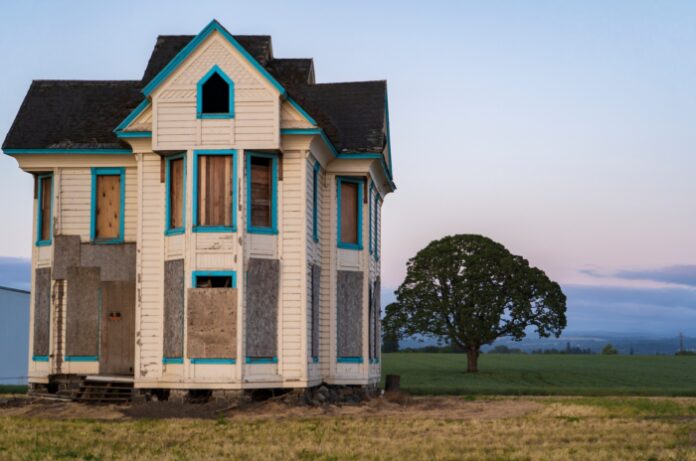By Steve Davis, CEO — Total Wealth Academy
The processes of renovating a fixer-upper into a forever home and flipping a run-down house on a six-month time schedule are not at all similar, and confusing the two can lead to tens of thousands down the drain and blown budgets. Rehab projects can be extremely lucrative, but only if you treat them like a business, as tight profit margins tend to leave no room for mistakes.
Here are the top 10 pitfalls in the space and what you can do to avoid them.
1. Getting emotionally involved with the rehab property
Successful home flippers look for “Hair on the Deal” — the hairier, the better. In other words, the ugliest piece of garbage promises the deepest discounts.
Flipping is a business, but people treat it like a personal hobby by overbuilding and designing homes they would want to live in. I’ve seen people who live in million-dollar homes put the fixtures, finishes, and appliances they have at home on $400,000 rehab properties. Inevitably, this pushes the budget beyond what the property can stand.
2. Overpaying for the rehab property
Many people get into property flipping without the ability to evaluate a property’s value. They say, “The tax record shows the property is worth $400,000, and six other homes in the neighborhood are listed for $400,000, so that means this property is worth $400,000.”
However, none of that information has anything to do with a property’s value. Find out what the last five, six, or seven homes similar to your flip property recently sold for, and base your numbers on the average of those sales.
To find accurate data, subscribe to an online service offering comparable sales. You can get the numbers from you’re real estate agent, but remember that agents have skin in the game, too. They can work the numbers to push that average up and make your rehab property look like it’s worth more than it is.
3. Moving too slowly on a rehab property
Good deals don’t last. When I hear about a deal, I typically make an offer within five minutes. My agent calls and says, “Look, this house is worth $400,000, it needs $100,000 in rehab, and they’ll sell it for $200,000.”
So, I’ll hang up, run comparable sales, and analyze the numbers. If the average sales price of other homes like it is really $400,000, I call the agent back and write an offer.
To be comfortable making an offer so quickly, I embed a five-to-seven-day option period into the contract, which gives me enough time to investigate the property. If I find something I don’t like, I can get my earnest money back. Adding an option period to your contract costs between $100-150. You won’t get that money back, but it protects your earnest money and allows you to control the deal quickly.
Be ready to move before you even hear about a deal. Get pre-approved with your mortgage company before you look at your first rehab property, and have your insurance contact and general contractors already lined up.
4. Failing to obtain a written bid for the repairs before the contract
Sometimes, a seller will not give you an option, no matter what. In this case, your earnest money will be extremely hard to get back from day one, since you won’t get it back if you back out of the deal.
To move quickly, people take the realtor’s rehab estimate as fact. If the agent estimates $100,000 in rehab, flippers assume that’s correct and put up earnest money, but this is a bad idea. Instead, you need a written bid. That $100,000 estimate could easily come back to $120,000 and ultimately kill the deal.
In my experience, an agent’s estimate is always low. In a pinch, add 50% to their estimate. If that number works, then go ahead with the deal.
5. Failing to vet contractors
Anyone can slap a sign on a truck, but not all contractors are created equal. You may pay $30,000 upfront on your $100,0000 project, start off with six workers at your house, then pay the second $30,000 a few weeks later but find only two workers at your house. This means that your contractor has taken another job and moved four workers somewhere else.
Check references before signing contractors, and make sure those references are recent. You’re looking for referrals from clients who have seen the contractor’s work in the last six to nine months and who can answer the hard questions, like “Did contractors finish on time, and did they do quality work or did they nickel and dime you?”
6. Neglecting to agree on a penalty if contractors do not finish on time
Give your contractors hard deadlines and penalties for not meeting them. When you allow contractors to procrastinate and pull workers to other jobs, three-month rehabs drag into six-month projects with no end in sight.
To prevent this, build a penalty directly into the contract. For example, if a contractor tells me that a $100,000 rehab will take three months. I say, “Great, I’m going to give you three and a half months. After that, there’s a $200 penalty for each day beyond that three and a half months.”
7. Overbuilding for the neighborhood
When you get excited about a property, it’s easy to start what I call nesting, which causes you to overspend. The next thing you know, your $100,000 rehab has become a $130,000 project and your margins have evaporated. You were set to make $60,000 on the deal, but now you’re only making $30,000.
To avoid nesting, keep track of your numbers religiously. Calculate the total cost for your project, and if you are tempted to make a sudden change in fixtures or finishes, see how the math impacts your running total.
8. Trying to sell a rehab property for over the neighborhood average
When you price your rehab property high, you slow the sale and increase holding costs. The longer a property sits on the market, the more you pay.
To avoid this, run a comparable price on your rehab. The service will give you a low price where the property is likely to sell in 30 days, an average price where it should sell in 45 days, and a high price that will keep it on the market for 90 days or more.
While the home is on the market, you are on the hook for insurance, tax, and mortgage payments, meaning every month that passes without a sale eats into your profits. You will always make more in the long run by asking an average price rather than holding out for a top-dollar offer that may not come.
9. Using the wrong type of mortgage
I see so many people take loans against their home or 401K because they cannot use a conventional mortgage. A conventional mortgage will not finance a rehab house.
Remember, we’re talking about houses with a lot of hair on the deal — missing windows, missing doors, trashed cabinets, no flooring, etc. — and you can’t get a conventional loan for that kind of home. If Fannie Mae goes in and there’s no carpet in one of the bedrooms, you won’t get a loan.
To keep out-of-pocket costs low, finance your rehab property with a bridge loan or a hard money loan, which lump the sale price and rehab money together. In addition, down payments on these loans are far lower, meaning you spend less upfront and obtain funding for repairs. You can access these loans more easily by joining a local real estate investor club.
10. Using low-quality parts to save money
If you skimp when you rehab a home, people will notice. Picture a gorgeous white designer gown with a minuscule spec on the hem — that’s where your eyes go. For an anecdotal example, I remember a woman once walking right under an $18,000 chandelier to point out a slightly misaligned piece of crown molding.
You always want to show a home built with high-quality parts, but keep in mind the other side of this problem about getting emotionally attached to your rehab property and overbuilding. There is a big difference between high-quality parts and ego-based parts. If you’re doing a $1.5 million rehab, use ego products like a Viking or Sub-Zero in the kitchen, but high-quality parts are what you want to use in the majority of your flips.
The knowledge behind successfully flipping homes, rehabbing rentals, and owning apartment complexes fills entire bookshelves. These 10 tips are merely the tip of the iceberg. Before you go out and look at a flip property, educate yourself. Take time to read a book, pick a mentor’s brain, and attend some seminars. You won’t regret it!
Find a Home-Based Business to Start-Up >>> Hundreds of Business Listings.

















































